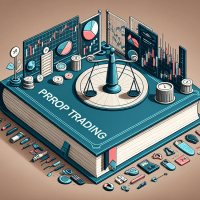Introduction: Unlock the Power of Prop Trading Incentives
Prop trading incentives have evolved into a sophisticated blend of competitive rewards and cutting-edge technology, empowering traders with strategic tools, specialized capital, and advanced analytics. In today’s dynamic trading environment, understanding how to leverage these incentives alongside backtesting tools can provide the edge required for consistent performance and risk management. This guide delivers actionable insights for both budding traders and experienced professionals, from detailed tool comparisons to expert backtesting strategies.
Understanding Prop Trading Incentives & Their Value
Prop trading incentives, such as funded trading accounts, profit split offers, and trading challenge discounts, are more than just marketing tools—they serve as strategic levers that help traders reduce personal risk while optimizing performance. A well-structured incentive program can align a prop firm’s interests with that of its traders, ultimately fostering an environment of continuous improvement and innovation.
Key Benefits of Prop Trading Incentives
- Risk Sharing: Lower personal capital risk while accessing larger trading funds.
- Enhanced Capital Efficiency: Use firm-provided capital to test strategies with less personal financial exposure.
- Motivational Tools: Encouraging performance through profit-sharing, bonuses, and challenge promotions.
Essential Backtesting Tools for Prop Firms
Automated backtesting is at the core of developing robust trading strategies in a prop environment. Here, we compare widely recognized tools that cater to both retail and institutional traders:
| Tool | Backtesting Features | Data Quality & Coverage | Integration | Pricing & Use Cases |
|---|---|---|---|---|
| TradingView | Vectorized backtesting, commission/slippage simulation, script optimization | Extensive historical and real-time data across asset classes | API access, broker integrations | Flexible pricing; ideal for both individuals and teams in prop firms |
| MetaTrader 5 | Event-driven and strategy testing via MQL5, robust optimization features | Comprehensive forex and CFD data, limited equities | Built-in broker connectivity | Cost-effective, widely adopted amongst retail traders |
| NinjaTrader | Highly customizable simulation, stress testing, scenario analysis | Diverse asset classes with real-time data feed options | Advanced API, broker and analytics integrations | Premium solution favoring professional traders and firms |
| QuantConnect | Cloud-based, automated parameter optimization, walk-forward analysis | Deep data libraries including equities, forex, crypto | Extensive API integrations with brokerage partners | Flexible subscription models, scalable for institutional use |
Advanced Backtesting Concepts for Prop Traders
Implementing backtesting correctly is essential for the success of any prop trading strategy. Here we detail the advanced techniques:
Mitigating Common Pitfalls
Advanced backtesting must address common challenges such as overfitting, survivorship bias, and look-ahead bias. To minimize these:
- Robust Data Sourcing: Use high-quality data providers to ensure reliable historical data, such as tick data or adjusted price bars.
- Out-of-Sample Testing: Divide your datasets to reserve a segment for unbiased validation.
- Walk-Forward Optimization: Regularly update and re-optimize models to adapt to evolving markets.
Walk-Forward vs. Traditional Backtesting
Traditional backtesting often relies on a fixed dataset which can mask future market risks. Walk-forward optimization iteratively refines a model by simulating real-time strategy adjustments. This process reinforces reliability by ensuring that strategies remain robust when market conditions change.
Integration with Forward Testing (Paper Trading)
Following extensive backtesting, integrating with a forward testing stage or paper trading phase offers validation against live market conditions. Key metrics to monitor during this phase include:
- Sharpe Ratio: Ideally above 1.0, indicating risk-adjusted returns
- Maximum Drawdown: Should be minimized to control risk exposure
- Profit Factor: A balanced ratio for sustainable gains
Real-World Case Study: Enhancing Strategy Resilience
Case Study: A mid-sized proprietary trading firm was struggling with unpredictable volatility and frequent drawdowns using their standard strategy. By integrating QuantConnect’s cloud-based backtesting and NinjaTrader’s advanced stress-testing features, the team recalibrated their models. The firm adopted a walk-forward optimization technique that enabled them to adjust strategies on a monthly basis, leading to:
- 25% Improvement in Sharpe ratio over a 6-month period
- 15% Reduction in maximum drawdown risks
- More efficient capital allocation and enhanced risk controls
This case underscores how careful tool selection, when combined with advanced backtesting methodologies, can significantly improve performance across various prop trading strategies.
Practical Implementation Tips for Prop Firms
Adopting these methodologies and tools requires both strategic planning and detailed operational changes. Here are some practical tips:
- Start with a Clear Hypothesis: Develop a systematic approach to define the strategy and its expected market performance.
- Invest in Quality Data: Ensure the longevity and accuracy of your historical datasets by partnering with reputable data vendors.
- Document Thoroughly: Maintain detailed records, including backtesting parameters, optimization cycles, and forward testing outcomes. This documentation is crucial for regulatory compliance under frameworks like MiFID II and ESMA regulations.
- Team Collaboration: Utilize platforms that support team projects, such as QuantConnect’s collaborative tools to allow risk managers and quants to review models together.
Additional Resources & Next Steps
For a deeper dive into these topics, explore our related articles such as Advanced Backtesting Techniques for Prop Firms and Prop Firm Risk Management Guide. These resources further elaborate on strategy optimization, compliance considerations, and advanced market scenarios.
Expert Guidance: Developing a robust trading strategy requires persistence and continual learning. We recommend downloading our Risk Management Checklist which provides a detailed framework for managing risks across varied market conditions.
As prop trading continues to evolve with technological advancements and regulatory updates, staying informed and leveraging the right tools will be crucial for success. Implement these expert strategies to fortify your trading approach and maximize your performance with real, data-driven insights.
For further advice and personalized insights, consider joining our upcoming webinar on advanced prop trading strategies. Empower your team with the latest techniques and become a leader in the competitive world of prop trading.







